Architectural Historian and ACS member Jon Wright led a walking tour of Catford, taking in the Catford Centre, Eros House, The Broadway Theatre, and St Lawrence’s Church.
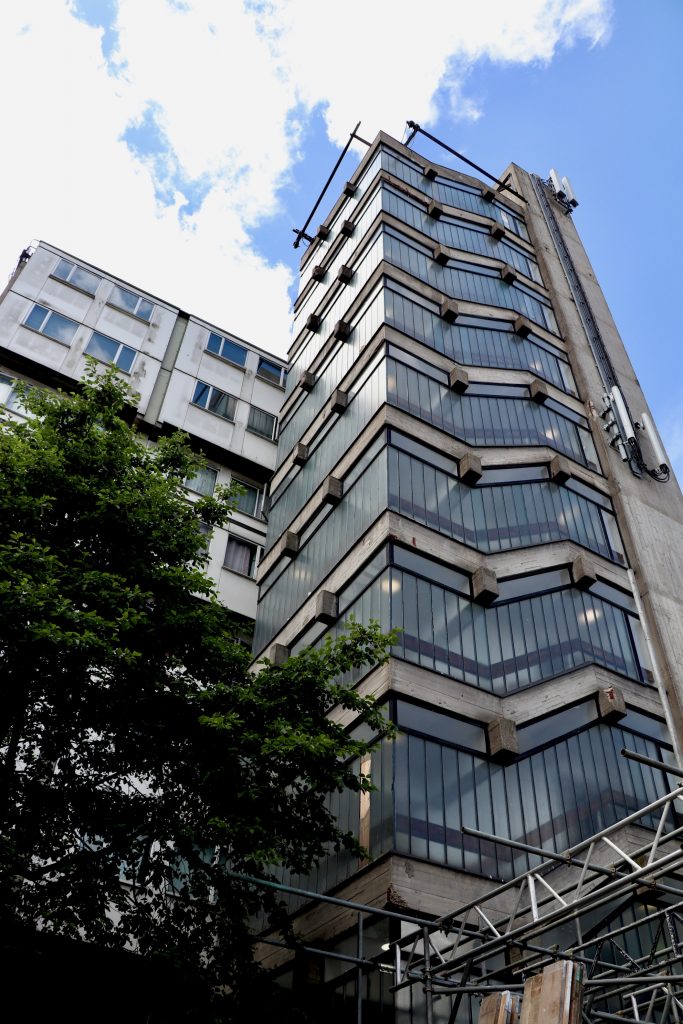
Jon has a wealth of knowledge and experience when it comes to 20th century architecture, and he gave a brilliant introduction to Catford’s Brutalist buildings (designed by Owen Luder), before showing us round the Theatre (currently undergoing extensive renovation in advance of a scheduled unveiling in December 2022).
He then took us to see St Lawrence’s church on Bromley road – a newly-listed 1960’s example of a concrete and steel sanctuary which has echoes of Liverpool’s catholic Cathedral, and some beautiful internal decoration.
Many thanks to Jon, and also to the people at ROOFF who are working on the Theatre renovation and made us feel so welcome.
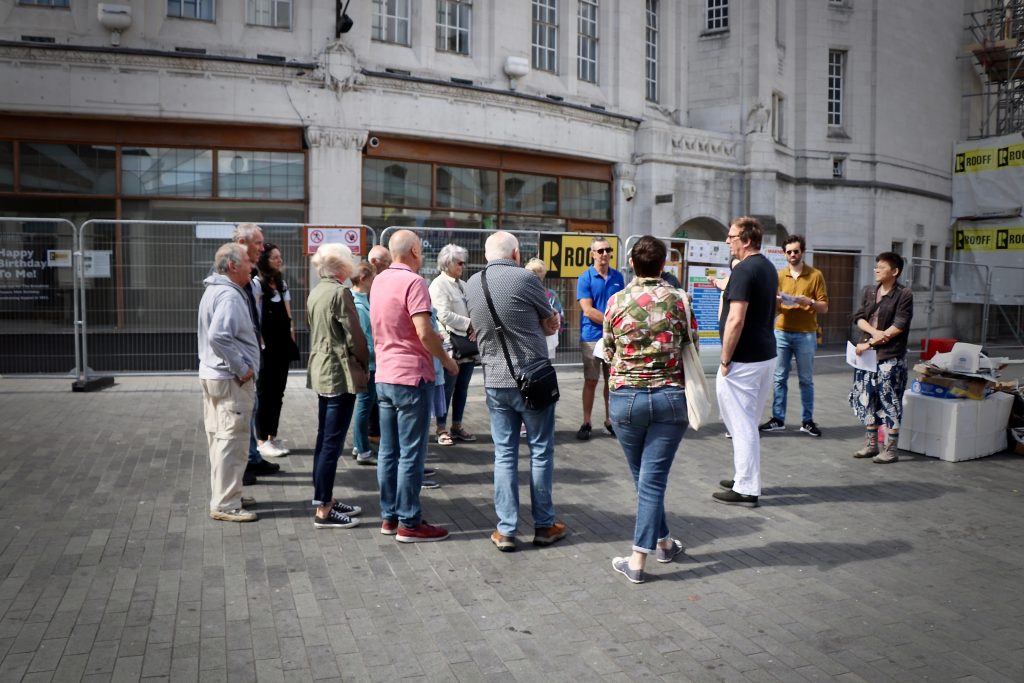
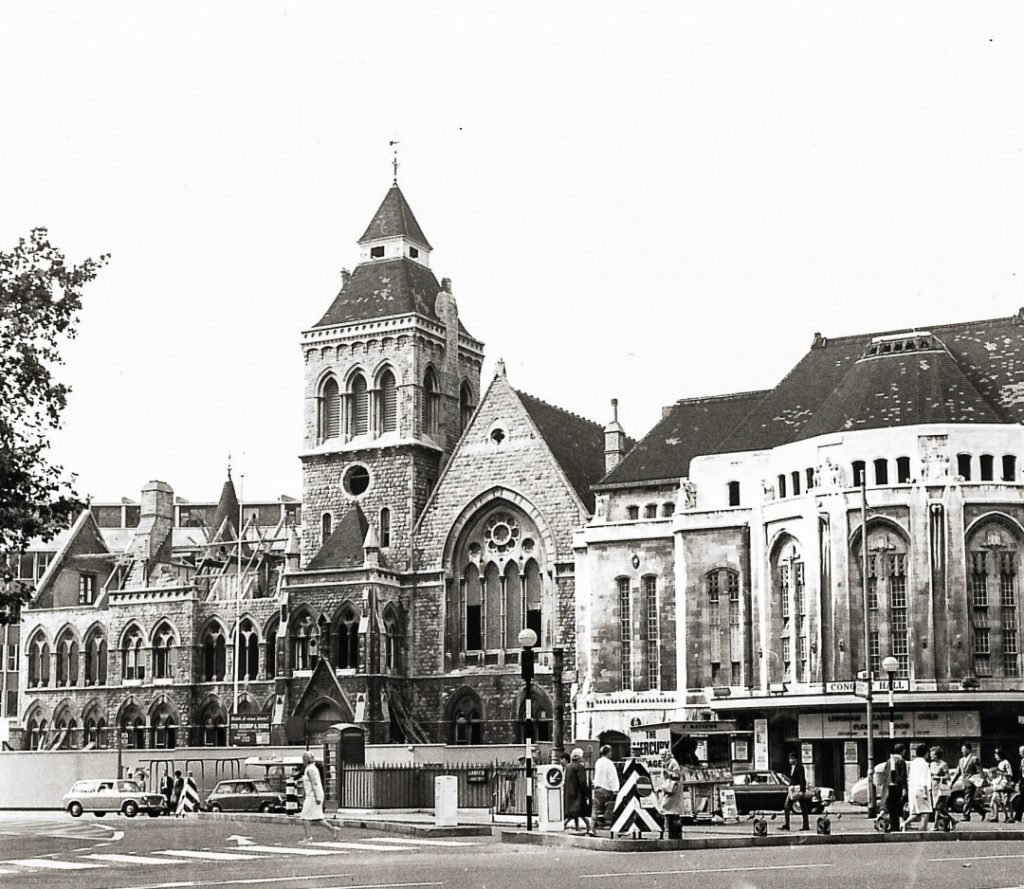
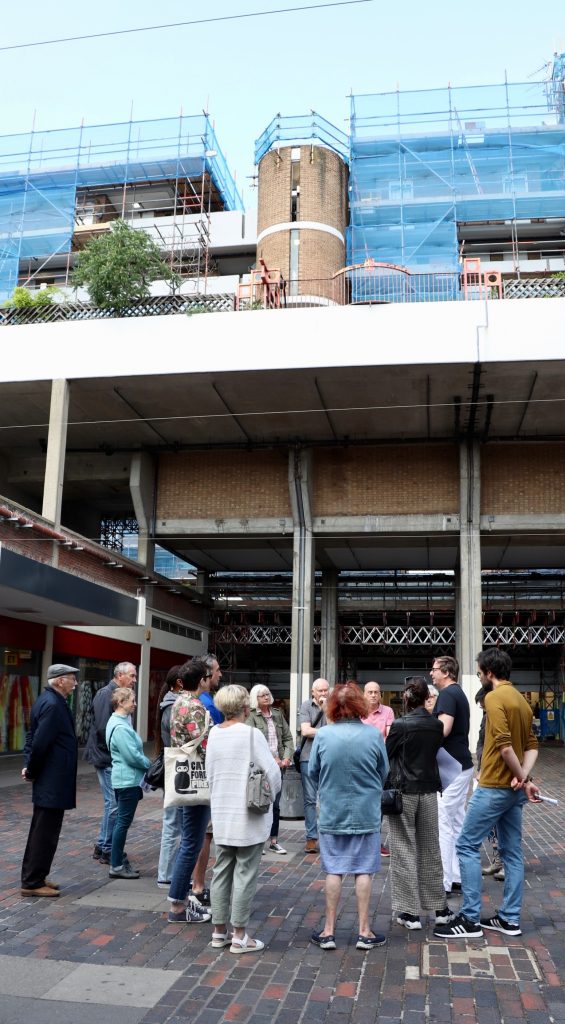
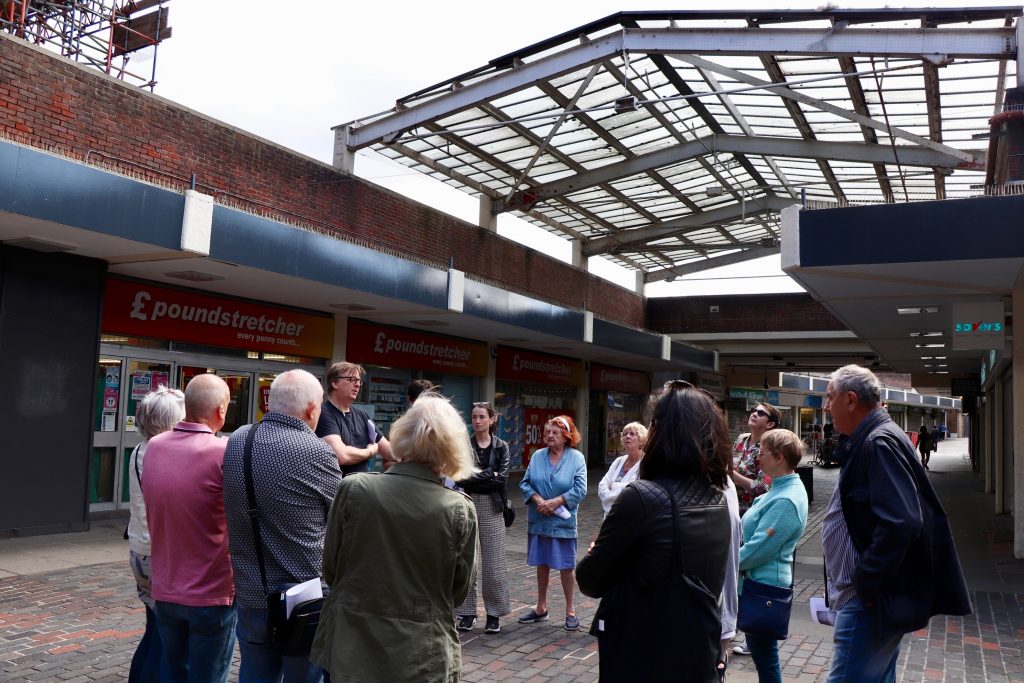
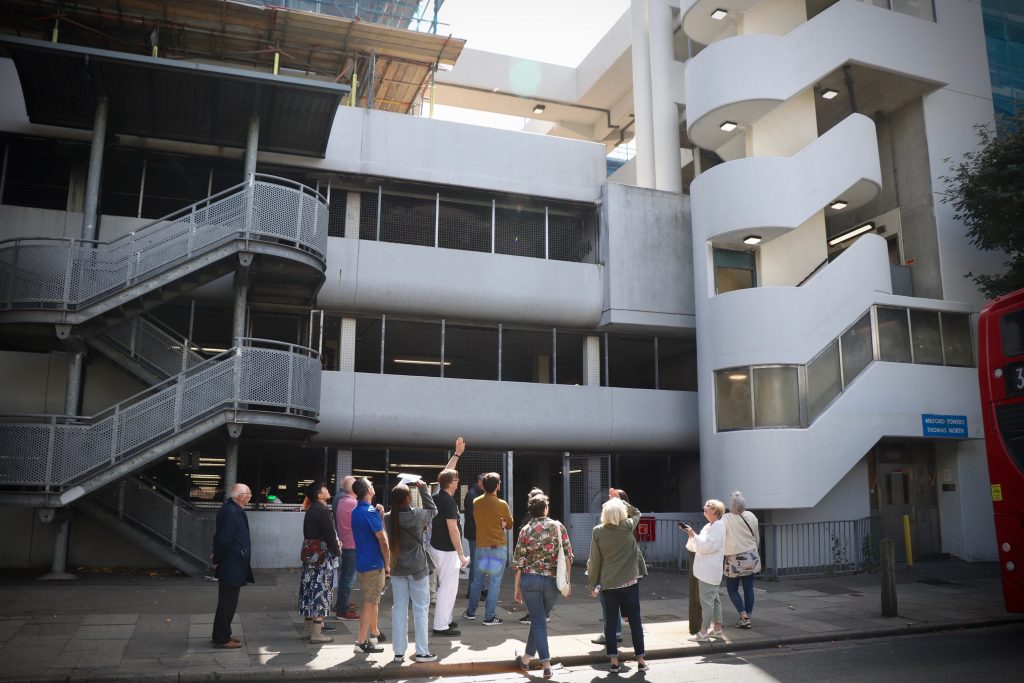
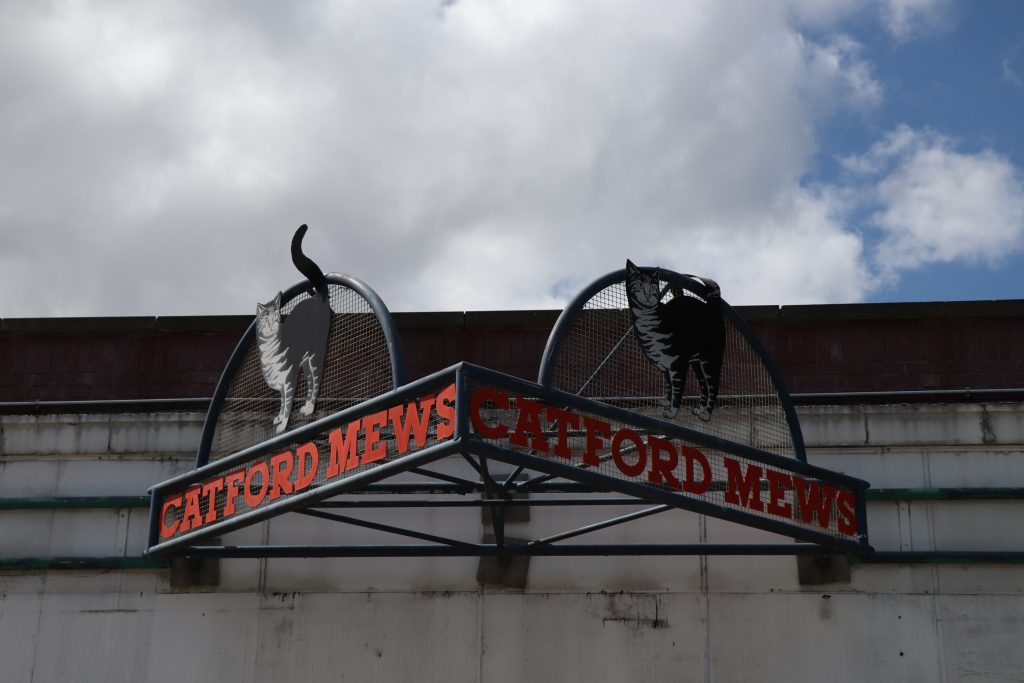
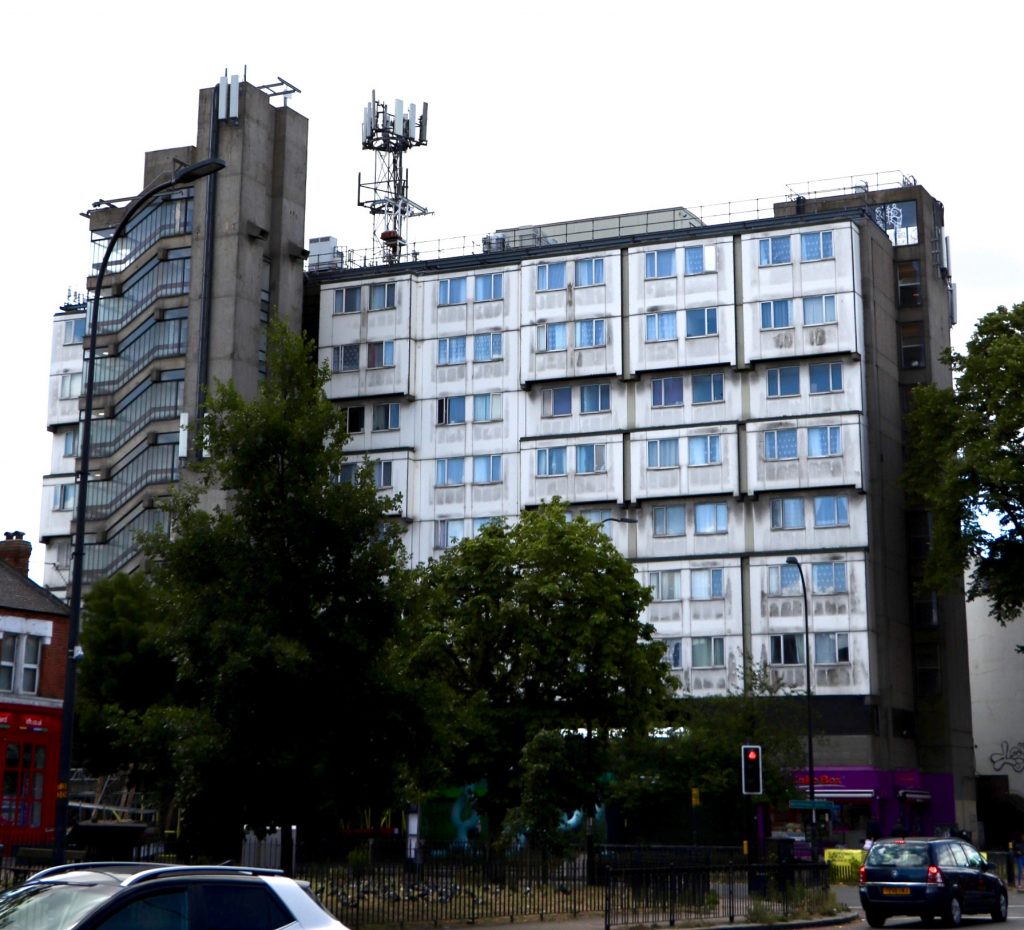
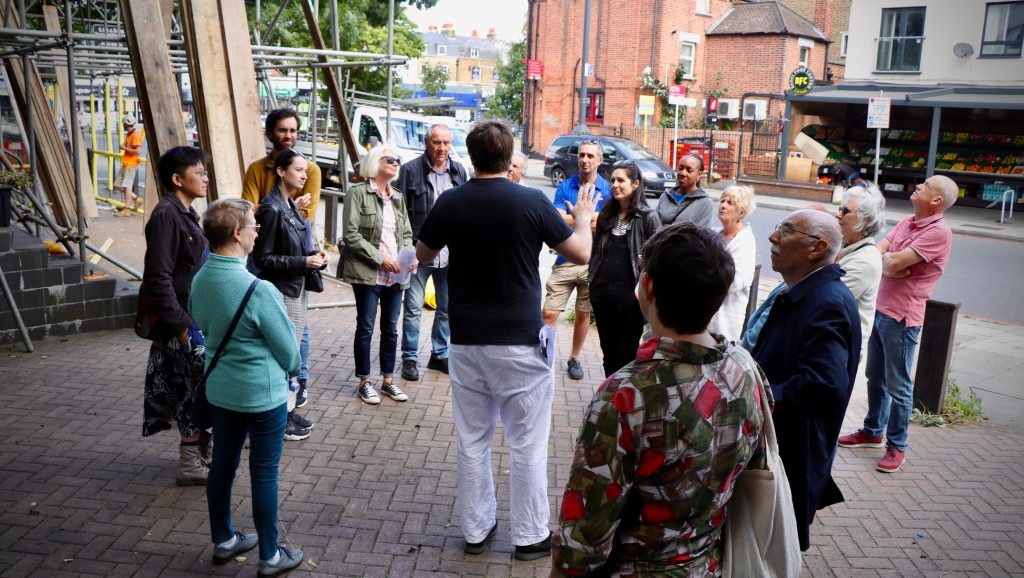
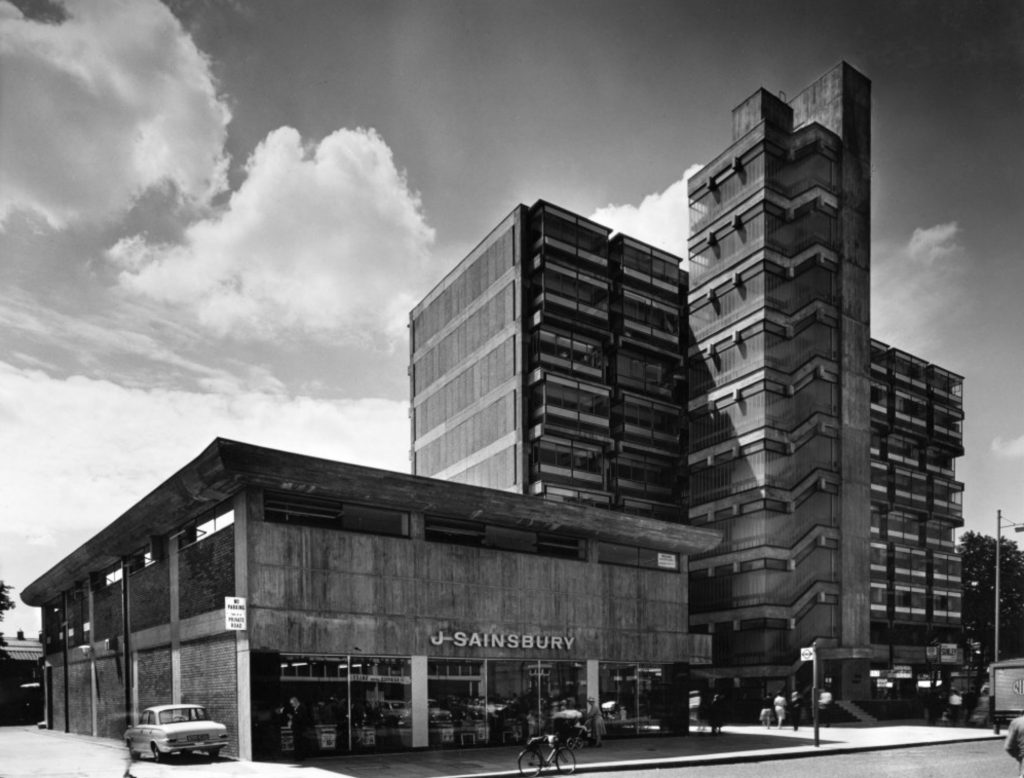
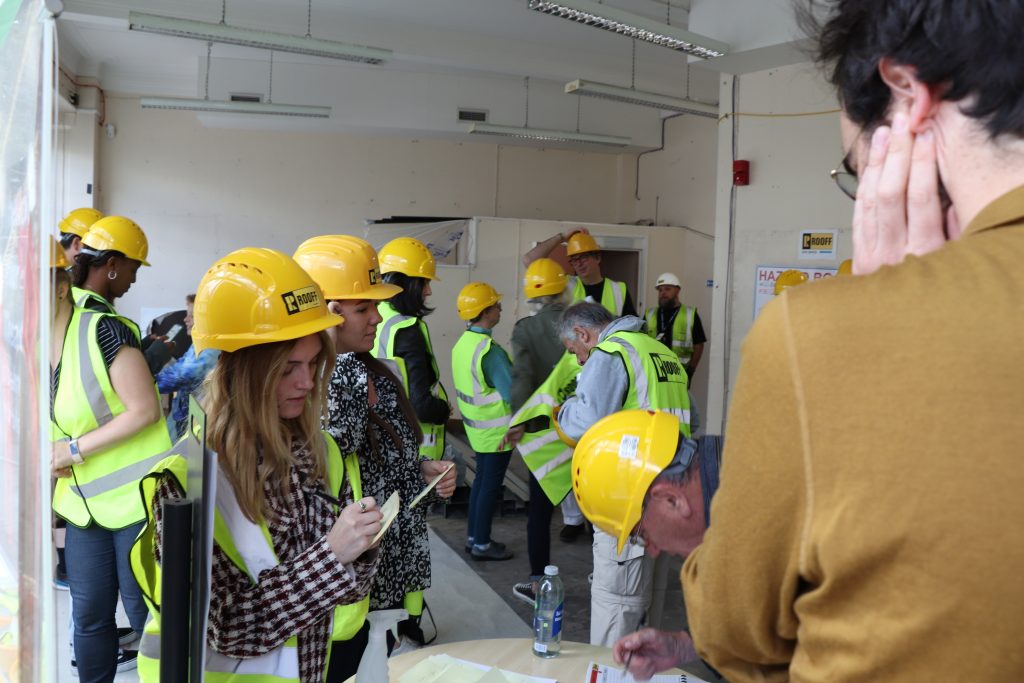
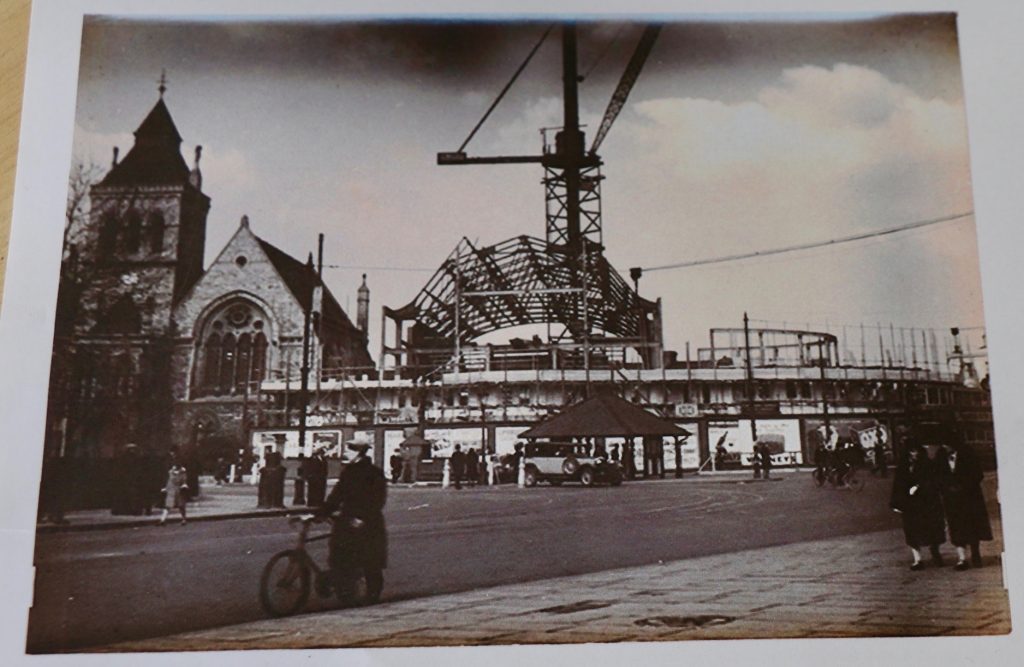
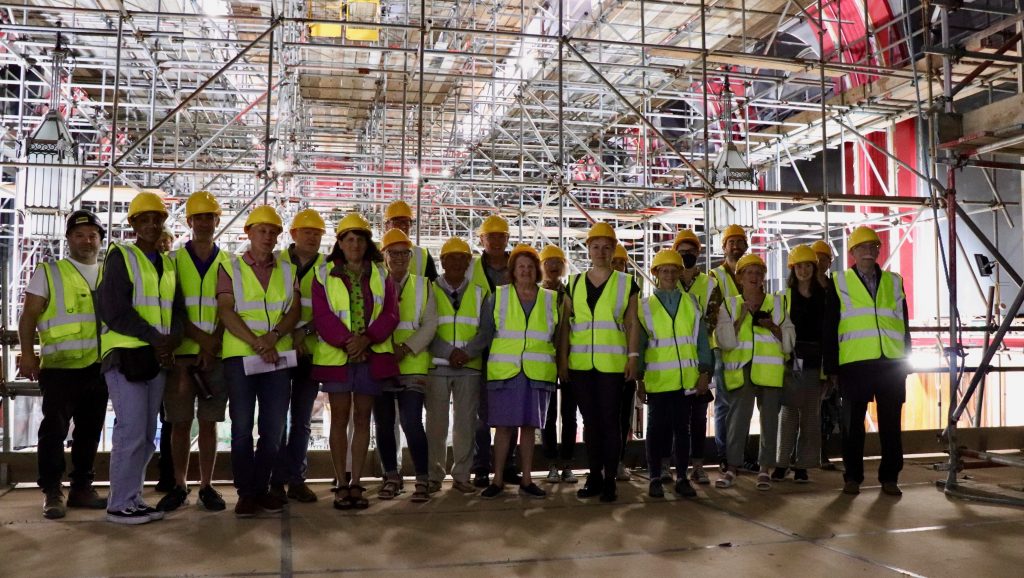
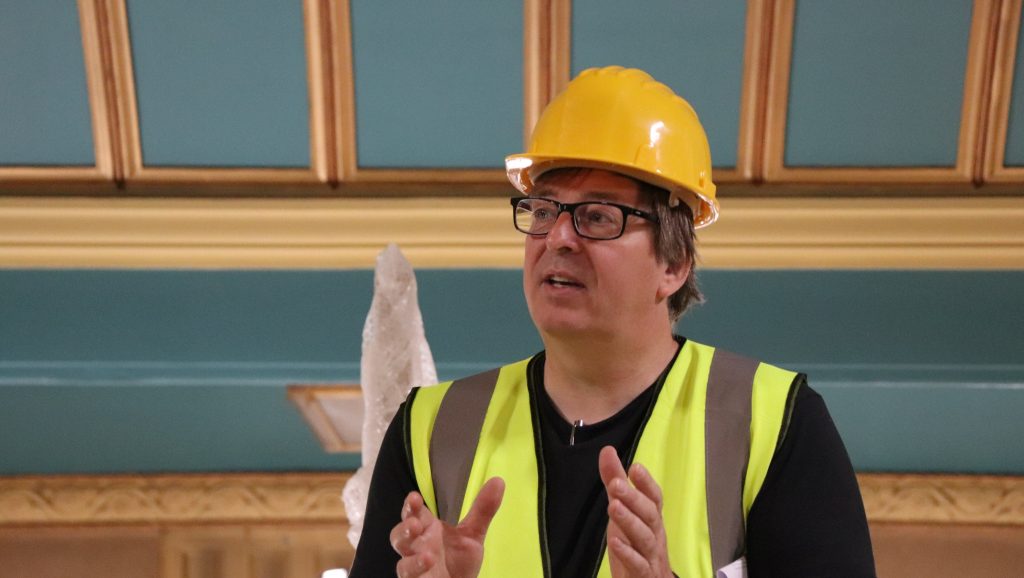
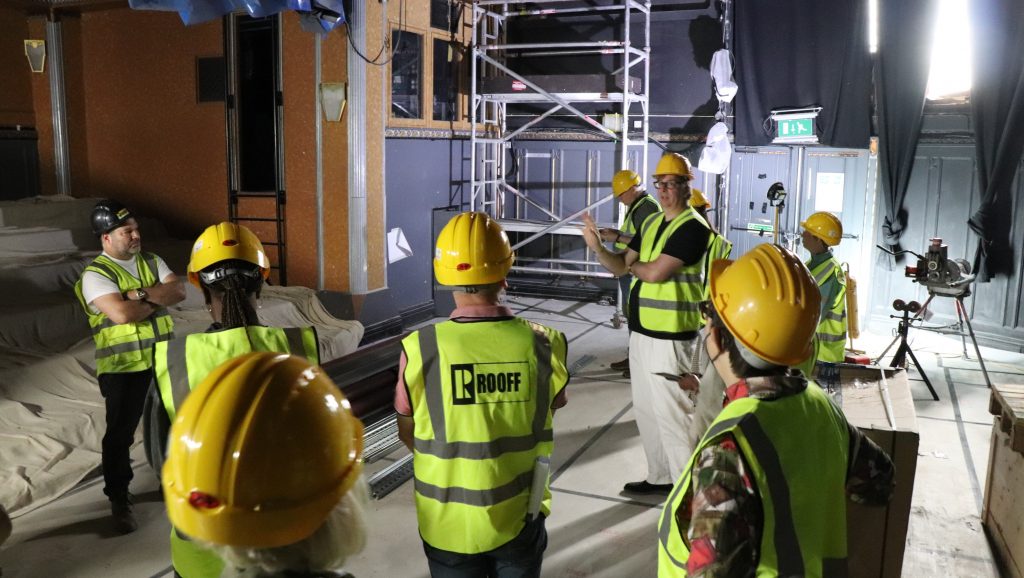
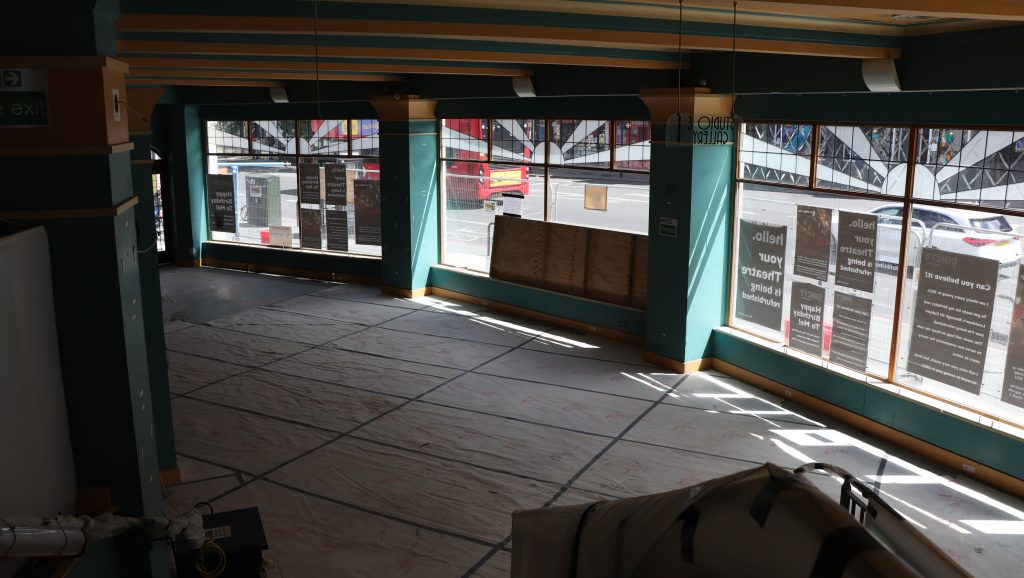
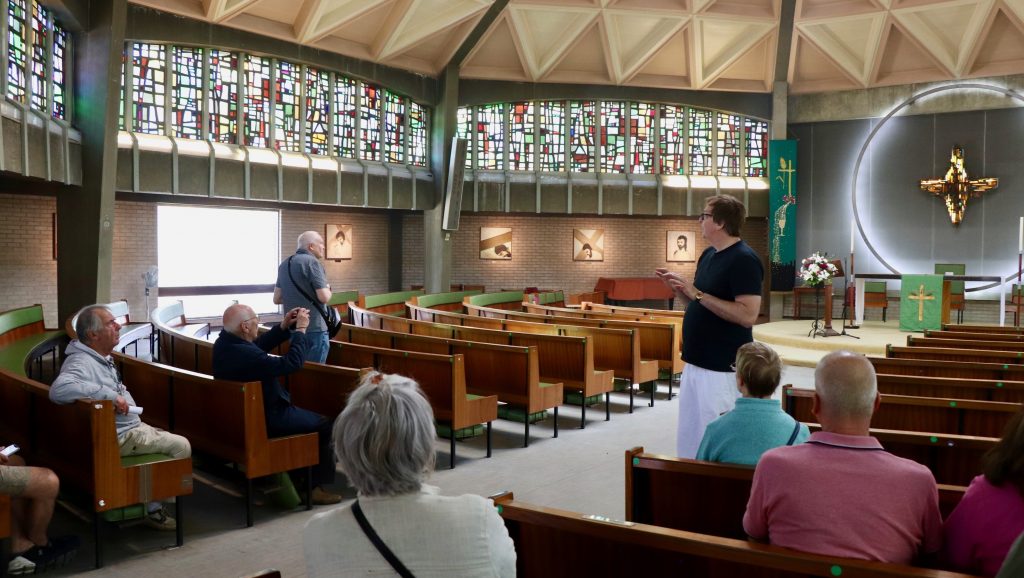
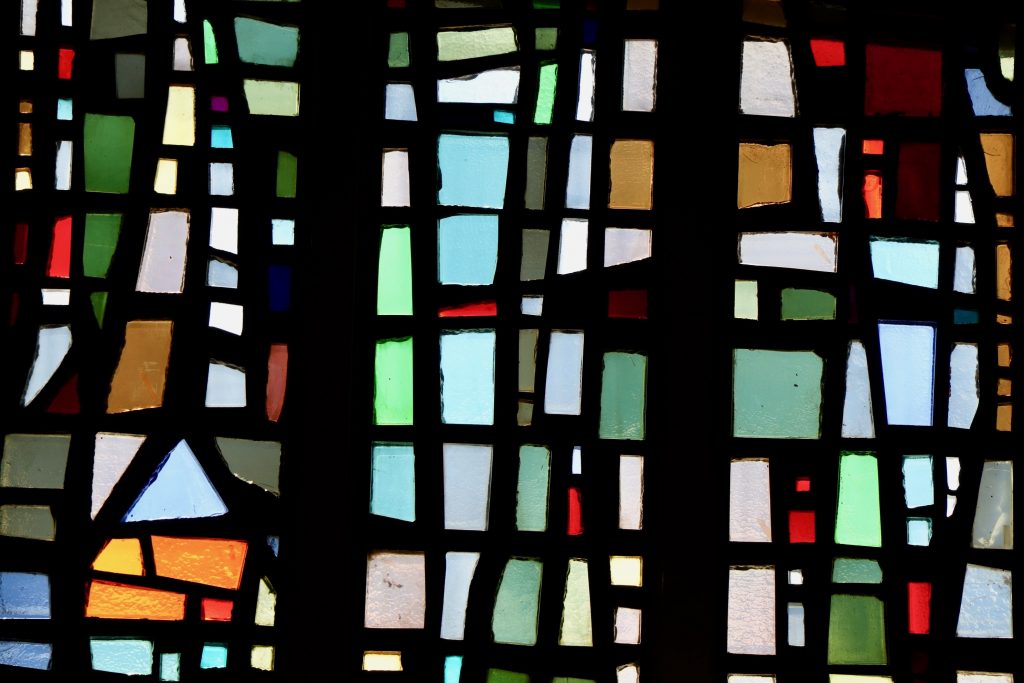
Here’s Jon’s notes from the tour:
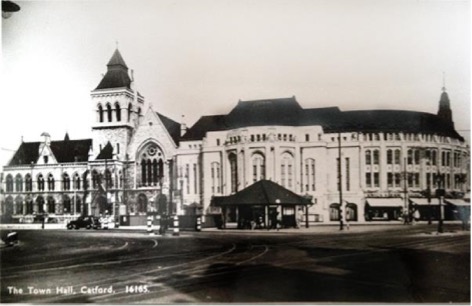
Broadway Theatre and Post-War Catford: A tour for the Archibald Corbett Society
By Jon Wright
Introduction
This tour has been developed as part of a social engagement project between the Broadway Theatre and the Archibald Corbett Society to help inform about the ongoing works to restore the theatre and ensure its future as a public venue at the heart of cultural and community life in Catford and the surrounding area.
With the impending re-development of Catford Centre, the chance is also being taken to look at some of the surrounding Post-War heritage of the area, some of which may well disappear in the onrush of the regeneration. We will have a look at the Catford Centre and Eros House, before we go into the Theatre for an internal tour and we’ll finish at the nearby St Laurence Church.
The tour has been made possible by the Broadway Theatre, Purcell Architecture, Rooff and the staff of St Laurence Church. The tour organisers would like to extend their thanks to all who helped make it possible.
This is a chance to see some of these defining pieces of Catford’s more recent heritage up close before they either change or disappear for ever — we hope you enjoy it.
Catford Centre
Owen Luder Partnership (OLP) 1967-74
Unlisted Scheduled for demolition
The Catford Centre was designed as a large-scale megastructure — coined the ‘Barbican of the South’. A fascinating and highly complex piece of architecture, it is the last of its kind designed by the Luder practice after the loss of the Trinity Car Park in Gateshead and the Tricorn Centre in Portsmouth. The complex accommodates a shopping precinct, housing and carpark, built for Lewisham Council. OLP had previously produced office block Eros House for Lewisham (1962-63).
The complex was constructed on a reinforced concrete frame with a buff brick facing and metal casement windows. Milford Towers (to the northwest side of the plot) consists of 276 flats and maisonettes in 9 blocks of 3-5 storeys, arranged around landscaped concourse and connected by elevated walkways. The northern part stands over a multi storey carpark, while the southern part is positioned over a 2-storey supermarket. The shopping precinct (Catford Centre), to the southeast, is single-storey with retail units either side of a central mall, which continues west beneath raised entrance concourse to Milford Towers to connect with the supermarket. A large fibreglass cat sculpture sits above the metal signage over the Rushey Green entrance to the Catford Centre at the eastern boundary of the site. This sculpture was created by the now defunct Embassy Signs and is reported to have been erected in 1974 when the construction of the development was completed.
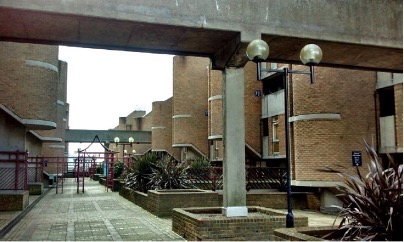
Current situation:
Historic England renewed a Certificate of Immunity (COI) for the Catford Centre and Milford Towers. A COI was issued in 2012 and 2017. The 2017 COI is set to expire this year.
When the first COI was granted, Lewisham Council was pushing forward with plans to demolish the complex as part of a regeneration of Catford Town Centre. However, plans stalled and in 2013 Lewisham signed an agreement with Notting Hill Genesis Housing Association to let out homes at intermediate rents. In 2018, further delays saw the council extend its agreement with Notting Hill until 2024. Scaffolding is currently up around the towers, appearing to relate to essential concrete and brickwork repairs. However, it seems that Lewisham’s long-term plans are still to demolish the complex. There have been protests by residents in recent years, relating to lack of maintenance and upkeep resulting in poor living conditions.
Eros House
Owen Luder Partnership, 1960-3
Unlisted — (Turned down in 2001)
Eros House was constructed as offices and shops for Lewisham Council in 1962-3 and was widely celebrated as a pioneering piece of Brutalism — a style for which Luder became synonymous. It was built for the Bernard Sunley Investment Trust and it replaced the Hippodrome which had originally stood on the site. The building is nine storeys high and was set behind a forecourt partly framed by a two-storey volume to Brownhill Road. It won an RIBA Civic Trust award on completion The building was converted to flats and has suffered neglect, Luder was so angry at the transformation, he asked for his name to be removed from the architect’s plaque.
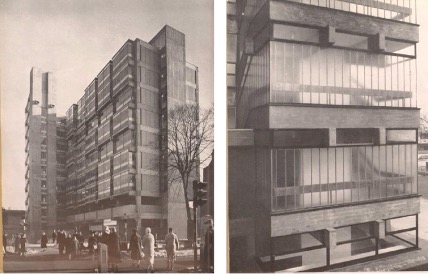
Broadway Theatre
Bradshaw, Gass & Hope 1931/2
Listed Grade Il
Built in 1931-32 by Arthur John Hope of the firm of Bradshaw, Gass and Hope as a concert hall extension to the old Town Hall of 1874-5 by G Elkington, which was demolished in the 1950s.
Hope designed a Neo-Gothic four-storeyed building which had a pronounced Gothic entrance pavilion with high a pitched roof and tall Gothic lights which echoed those of the original Town Hall. The extension plan followed the existing curved form of the peninsular site between Catford Road, Rushey Green and Springfield Park Crescent. The steel frame construction allowed for a simplified elevation and stylised Gothic features. To the ground floor, Hope incorporated retail units with large window openings, supported by Wide architraves which Immediately integrated the building into the streetscape. To the first-floor, exterior buttresses and paired Gothic lights rise up to the parapet reaching the high-pitched roof and roof-top steeple above establishing the central axis. Externally, the facade was decorated with motifs which featured sea creatures, heraldic deer and bears, the final two are representative of the Lewisham Borough coat of arms. To the east elevation, a secondary entrance bay was positioned with a neo-Gothic porch which gives additional access to the Town Hall Chamber. Internally, the design included office spaces and, most significantly, also Included the concert hall and entertainment spaces to accommodate mixed use activities such as dancing, wrestling and minor theatricals. At the time of its construction, the job value for the architectural work was £132,000. Bradshaw, Gass and Hope were awarded the London Architecture Medal for their design.
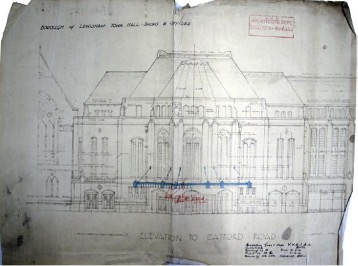
Original Elevational drawing for the Theatre, 1930
St Laurence Church and Community Centre
Covell Matthews Partnership, 1967 Listed Grade Il
St Laurence Church replaced a church by HR Gough of 1887 located nearby, the site of which was acquired by Lewisham Council for part of the new civic centre, called Laurence House. The builders were FC Steele and Partners and the church cost over £200,000, covered by compensation from Lewisham Council for the loss of the old church and site. Upon opening in 1968, St Laurence was known as the ‘space-age’ church and the spire was likened to a satellite.
The church was intended as a community centre as well as a place of worship. The site on Bromley Road was a large one and so a large social centre was constructed at the same time as the church, vicarage and two houses. The Church Times called it ‘a parish centre’
The church comprises three main parts, all Interconnected: an octagonal church with corona; a pentagonal Lady Chapel with tall open-work spire; and a community centre with hall, kitchens, coffee room and other spaces for social activities. The church has a reinforced concrete skeleton with red brick infilling. Concrete flying buttresses project from the octagonal body of the church, forming the ribs of the shallow domed roof beneath which segmental slips of clerestory are exposed to each of the eight sides. The corona is in aluminium, stainless steel and gold, as is its visual counterpart, the 56m spire to the Lady Chapel which houses a bell from the Victorian church. The quality of materials IS good, and the use of brick, concrete and metals on the outside enhances the compositional strengths of the building: the use of concrete emphasises the flying buttresses, for example, and the different types of metal bring the spre and corona to life. The church is entered via a projecting porch with brick-clad walls, floor-ceiling glazing, and a raised concrete parapet decorated with patterns in a rough-cast concrete. The double doors, which form a large cross when closed together, are the originals. The octagonal auditorium is a dramatic space. The textures are rich: the polygonal roof is coffered with triangular panels of fibreglass; the clerestory contains coloured glass in an abstract pattern of blocks of bold, dense colour by T Carter Shapland; the altar cross, by the same artist, is made of fragments of coloured glass; the walls and floors are in light-grey brick. The stained-glass window mullions extend across the concrete structural beam below, characteristic of the holistic approach to design here. The sense of geometry is strong, conveyed through the triangular patterns of the ceiling, the circular altar dais and the curved pews, made especially for this church, which radiate in a fan shape from three sides of the altar.
Archibald Corbett Society/2022